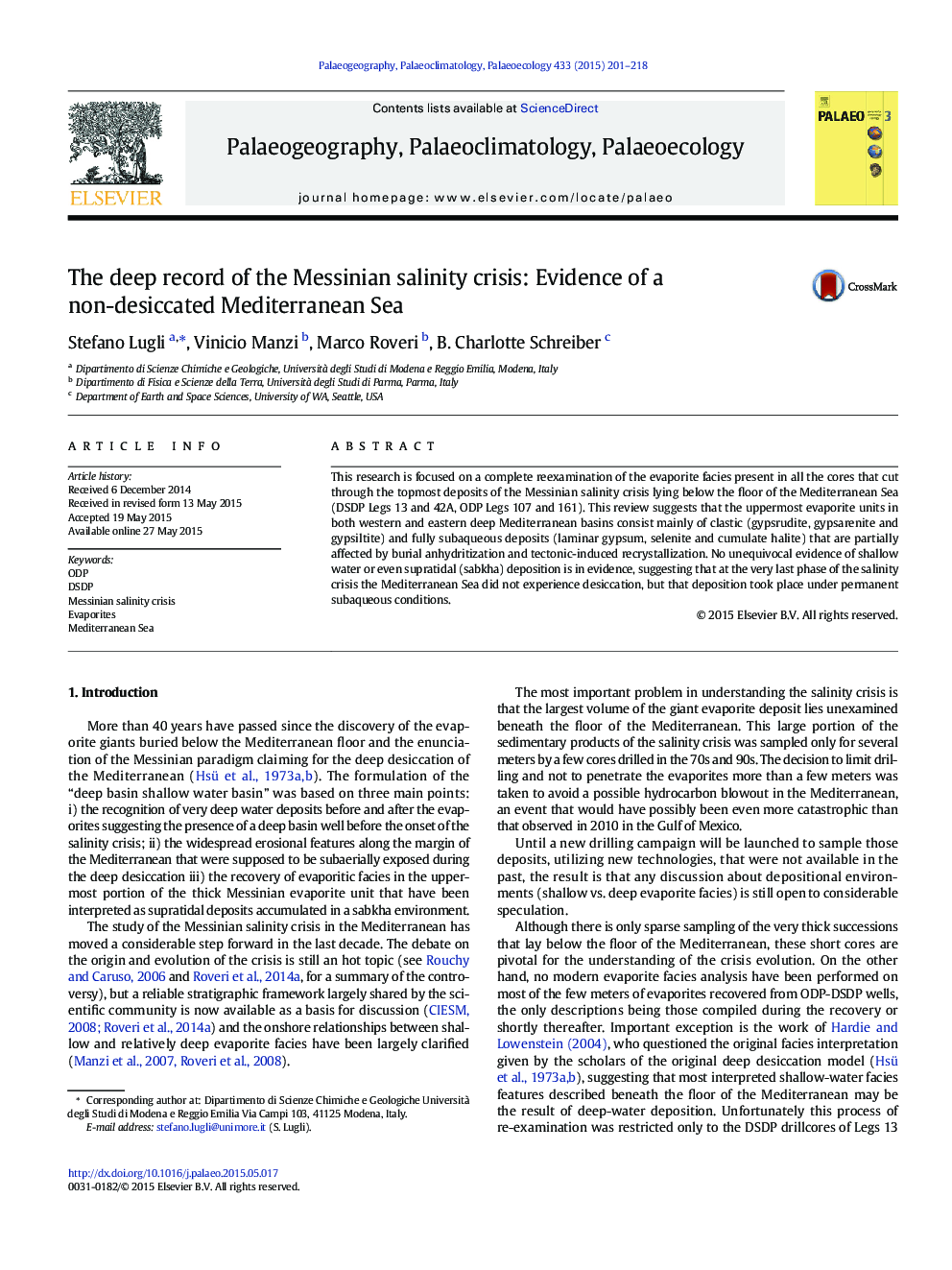| Article ID | Journal | Published Year | Pages | File Type |
|---|---|---|---|---|
| 4465929 | Palaeogeography, Palaeoclimatology, Palaeoecology | 2015 | 18 Pages |
•We reexamined the Messinian evaporites below the floor of the Mediterranean Sea.•We recognized mainly clastic and fully subaqueous evaporite deposits.•No unequivocal evidence of shallow water or supratidal deposition is in evidence.•Evaporite deposition took place under permanent subaqueous conditions.•During the last phase of the salinity crisis the Mediterranean was not desiccated.
This research is focused on a complete reexamination of the evaporite facies present in all the cores that cut through the topmost deposits of the Messinian salinity crisis lying below the floor of the Mediterranean Sea (DSDP Legs 13 and 42A, ODP Legs 107 and 161). This review suggests that the uppermost evaporite units in both western and eastern deep Mediterranean basins consist mainly of clastic (gypsrudite, gypsarenite and gypsiltite) and fully subaqueous deposits (laminar gypsum, selenite and cumulate halite) that are partially affected by burial anhydritization and tectonic-induced recrystallization. No unequivocal evidence of shallow water or even supratidal (sabkha) deposition is in evidence, suggesting that at the very last phase of the salinity crisis the Mediterranean Sea did not experience desiccation, but that deposition took place under permanent subaqueous conditions.
